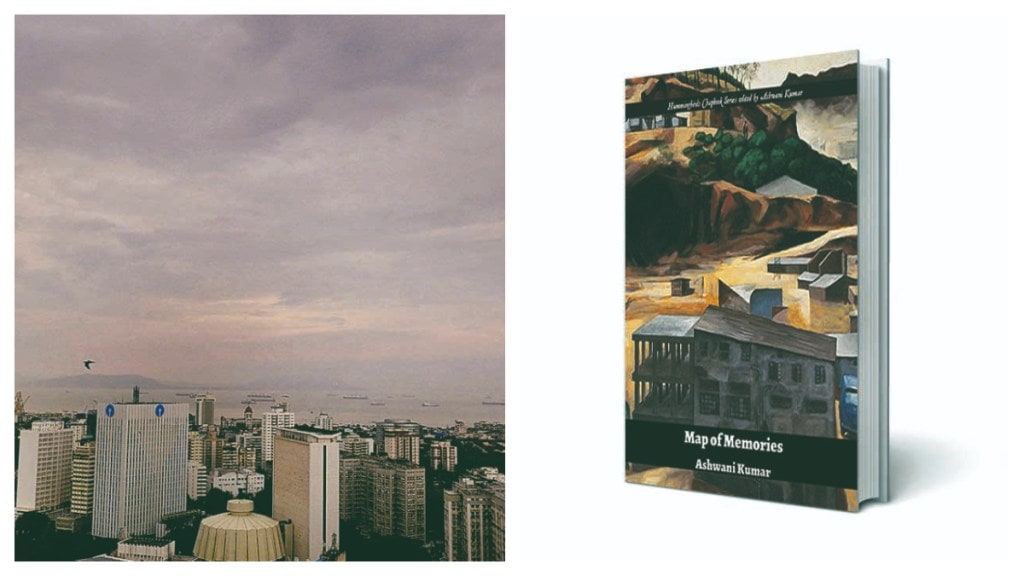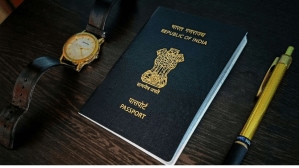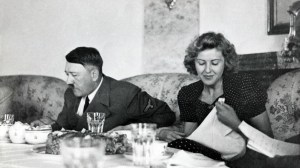By Sutanuka Ghosh Roy
The modern culture of panic over declining powers of memory is reshaping how we see the narratives of the past. This slim volume of dynamo brings forth the effects of how people and societies remember and forget. The title Map of Memories is interesting and intriguing. From ‘what we know’ to ‘how we remember it’, the archaeology of poet, author and academic Ashwani Kumar’s memory keeps changing, displaying political, interpersonal, social and cultural shifts. The tension between the poet’s desire to hold on to events and experiences creates the poetic environment of exteriorisation, which is captured wonderfully by the book cover, an expressionist artwork of the cityscape of Pokharan in Thane, by Sudhir Patwardhan. Map of Memories, a 32-page chapbook, is a comparative study of both the written way of representing memory and the reproduction of memory in verses.
An Imaginary Map of My City, the opening poem of the collection, brings forth the literary mediation of memory and experience set in the narratives of a particular time, space and milieu of the city of Mumbai.
All male tailors and trainers
For women
Are banned in the city
There is neither summer
Nor winter here:
Rain eats everything
The understanding of the memory of the city of Mumbai mediated through poetry refers to a specific modality of reflection by which Kumar examines lived experiences ingrained into poetry. Like a cartographer, Kumar draws an imaginary map to determine the relationship between everyday experience, lived events and their translation into poetry.
From gold to garbage
And the city burns
In the prayer-chamber of orchid-tears.
No religion exists in my city:
jobless priests live
in abandoned Kali temples.
The city has metamorphosed into “an auction house for ships, slaves and savages”. In the city of Mumbai, Kumar is a ‘biographical puzzle’; he migrates like a water hyacinth and tries to find a space, a place which he can call a ‘home’ where he can ‘belong’. His memory of the places and the Anglophone poets of Mumbai— Adil Jussawalla, Arun Kolatkar, Arvind Krishna Mehrotra, Arundhati Subramaniam, Eunice de Souza, Gieve Patel, Jeet Thayil, Ranjit Hoskote—becomes an archive and is stored for future use, and poetry here acts as a repository.
My parents gave me no name.
Only a hyphen,
Always spelt wrong
And I have been jailed
Five or six times
for pronouncing my name wrong.
The emotional memory subjectivity is transferred from an autobiographical memory of a migrant to a public memory, because it is exposed and shared with his readers. This transmission of memories can reinforce the feeling of belonging to a group and a culture, a kind of form of representation that Halbwachs called collective memory. In Map of Memories, prosthetic memories become a part of the personal experience archive, flowing subjectivity and present and future time. The migrant is unable to follow a traditional language system, hence expresses his observations through allusions, allegory, intertextuality and polyphony and speaks to his readers and explicitly invites them to interpret and connect with his emotions. As the readers start setting their eyes closer to the zigzag pattern of the verses and the spaces in between, they find their own stories. Map of Memories is a cartography of lived experiences.
The artistic eye of the poet has the potential to imbue art with symbolic meaning, allowing readers to engage with hidden narratives through the tangible properties of the artwork. Kumar refers to Francisco Goya’s painting The Third of May 1808 in the poem Kierkegaard’s Memory of Fear and Trembling in Arabia, which venerates Spanish resistance to Napoleon’s army, evoking memories of pain and suffering in war. The poet’s allusion to Goya’s The Naked Maja records the bold gaze of a plebeian city woman, focusing eroticisation in a naked display of ferocity. The poet deftly uses intertextuality in Fear and trembling, fusing Søren Kierkegaard’s search for faith, despair with the “leap of faith” that is synonymous with Abraham in the Bible, catapulting the poem to an existential plane. The poet’s incisive question, “Where are you, Kierkegaard?” and the ensuing thoughts on ‘prophetic eyes’ and ‘artistic furies’ remind us of Eliot’s Prufrock and suggest a crisis of connotation and an absence of philosophical or spiritual clarity in the contemporary world.
New and Old Memories of Virus locates poetry as an archive for memory. Memory of the ‘virus’, ‘vaccination certificate’ are referred to not as an abstraction per se—but a way of passing through the empirical order to prepare new entities of interpreting experimental poetry.
Map of Memories maps the lived experiences of those who exist on the margins of our consciousness and yet are essential to everything that keeps the city of Mumbai and its people moving. The migrant-turned-poet conjures up a unique vocabulary that blends the precision of a scholar and the empathy of a radical thinker. None of the signposts in the city/life are permanent, yet in Map of Memories, the signposts in the poet’s memory are more fixed than permanent geographical markers.
Sutanuka Ghosh Roy is an associate professor of English at Tarakeswar Degree College, The University of Burdwan, West Bengal








